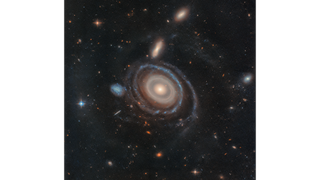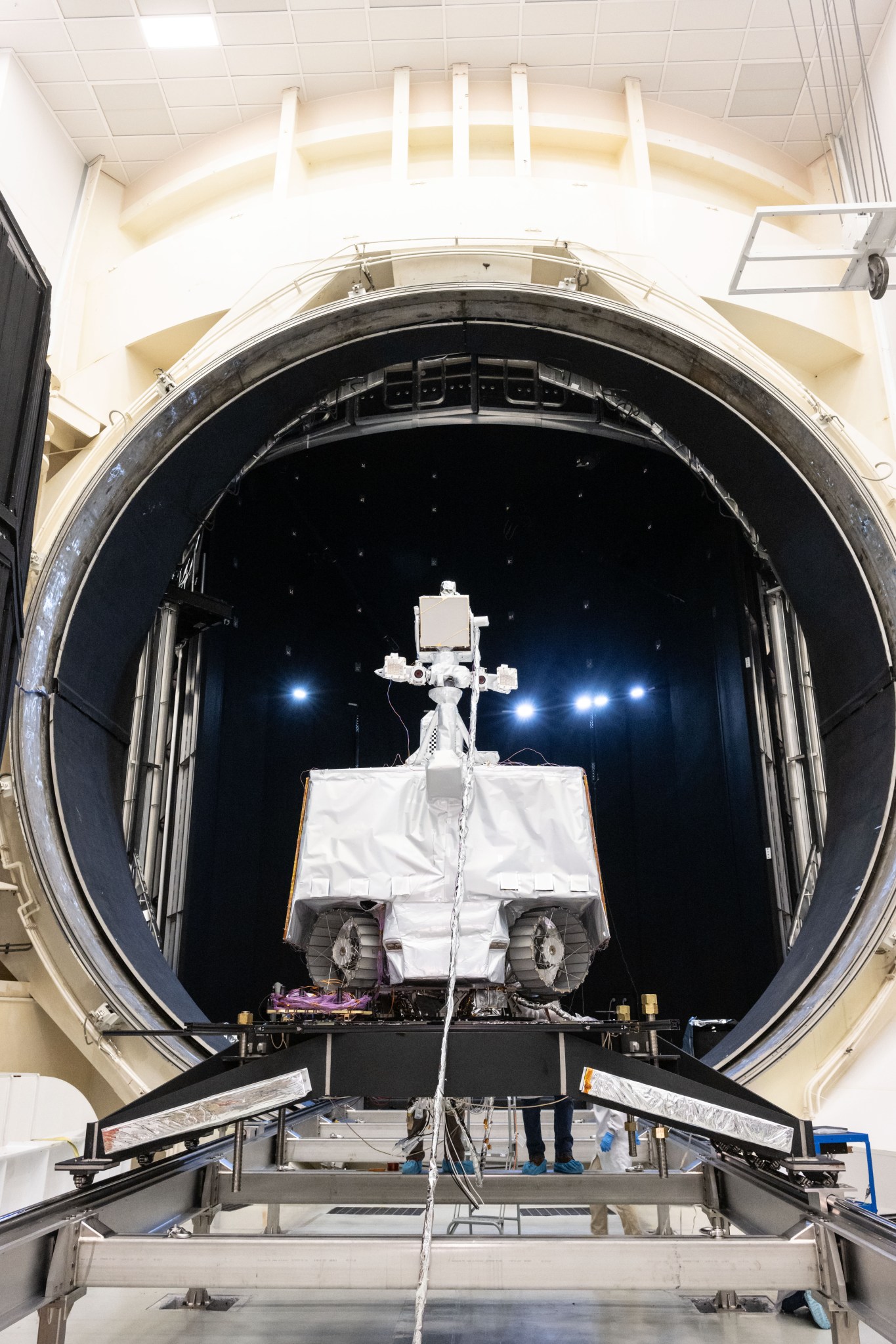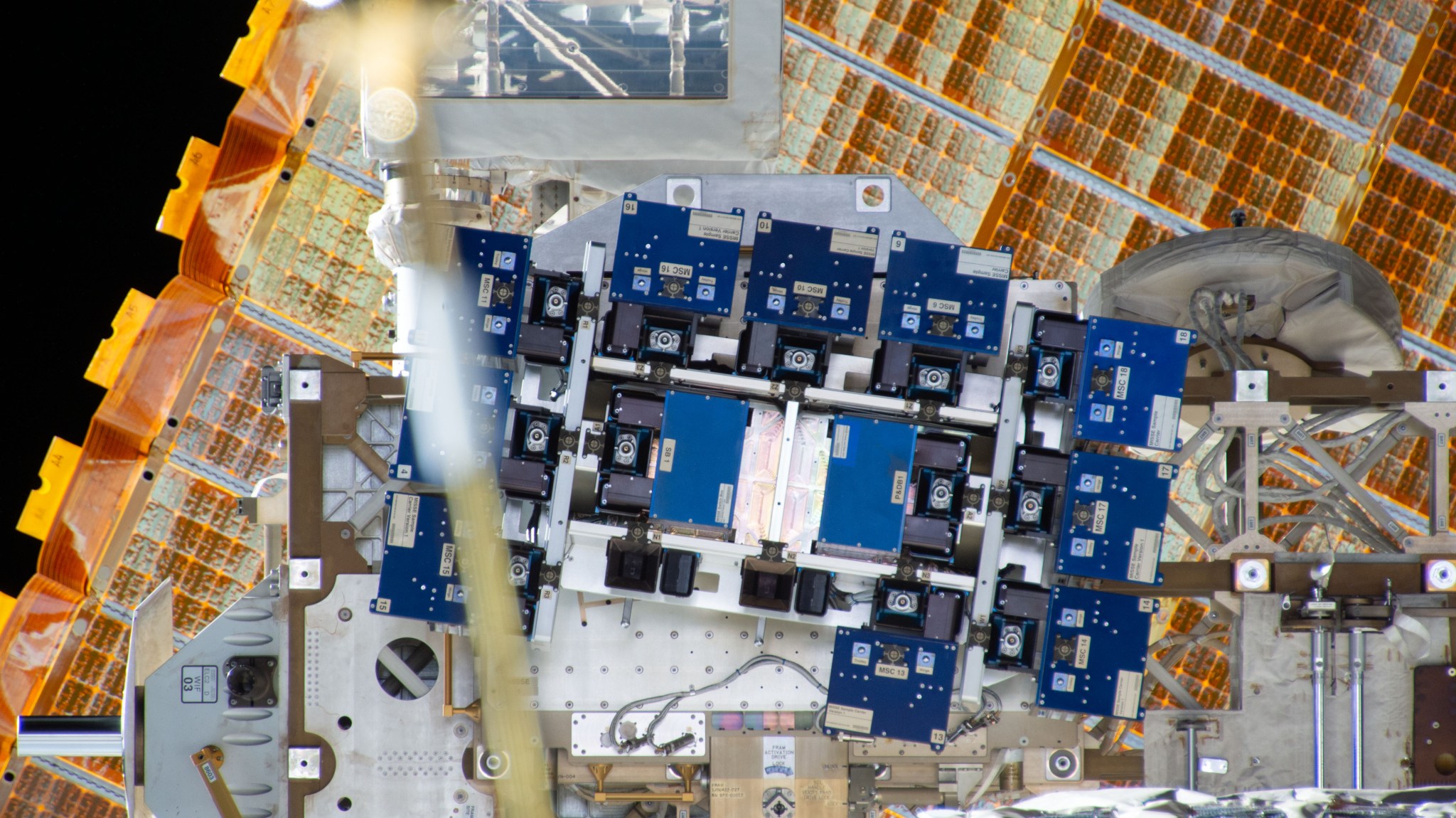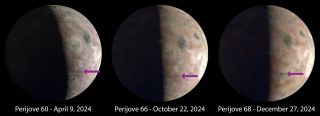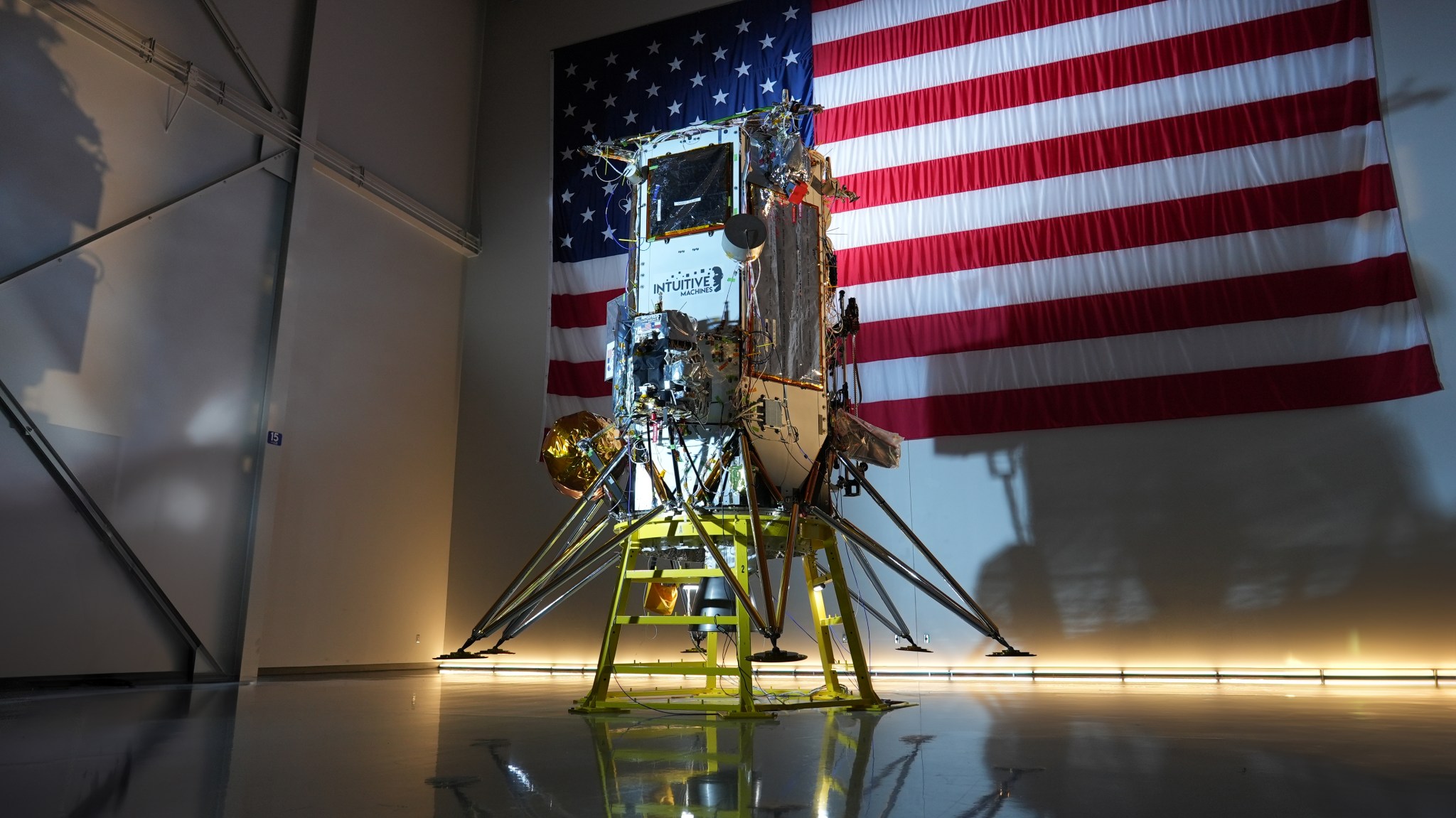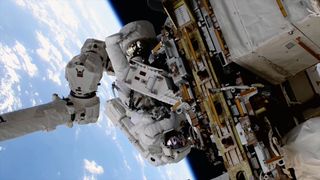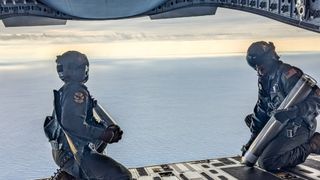NASA’s Hubble Space Telescope managed to capture an incredible image of a galaxy that looks an awful lot like a bullseye. “This was a serendipitous discovery,” said Imad Pasha, the lead researcher and a doctoral student at Yale University in New Haven, Connecticut, in a statement. “I was looking at a ground-based imaging survey and when I saw a galaxy with several clear rings, I was immediately drawn to it. I had to stop to investigate it.” In reality, this striking pattern formed 50 million years ago, when a small…
Read MoreTag: Missions
NASA Presses Forward Search for VIPER Moon Rover Partner
NASA’s VIPER (Volatiles Investigating Polar Exploration Rover) sits outside a testing chamber after completing its thermal vacuum testing in the fall of 2024. Credit: NASA/JSC David DeHoyos To advance plans of securing a public/private partnership and land and operate NASA’s VIPER (Volatiles Investigating Polar Exploration Rover) mission on the Moon in collaboration with industry the agency announced Monday it is seeking U.S. proposals. As part of the agency’s Artemis campaign, instruments on VIPER will demonstrate U.S. industry’s ability to search for ice on the lunar surface and collect science data.…
Read MoreStation Science Top News: Jan. 31, 2025
Seeds survive space A close-up view of the Materials International Space Station Experiment hardware housing materials for exposure to space. NASA Researchers found that plant seeds exposed to space germinated at the same rate as those kept on the ground. This finding shows that plant seeds can remain viable during long-term space travel and plants could be used for food and other uses on future missions. Materials International Space Station Experiment-14 exposed a variety of materials to space, including 11 types of plant seeds. The work also evaluated the performance…
Read MoreStation Nation: Meet Tandra Gill Spain, Computer Resources Senior Project Manager in the Avionics and Software Office
For astronauts aboard the International Space Station, staying connected to loved ones and maintaining a sense of normalcy is critical. That is where Tandra Gill Spain, a computer resources senior project manager in NASA’s Avionics and Software Office, comes in. Spain leads the integration of applications on Apple devices and the hardware integration on the Joint Station Local Area Network, which connects the systems from various space agencies on the International Space Station. She also provides technical lead support to the Systems Engineering and Space Operations Computing teams and certifies…
Read MoreNASA’s Juno spacecraft watches most powerful volcanic event ever seen on Jupiter’s moon Io
Even for Jupiter’s moon Io, the most volcanic body in the solar system, a recent volcanic event witnessed by NASA’s Juno spacecraft takes the biscuit. The event was just one eruption centralized in a newly found hotspot region of Io estimated to be larger than Lake Superior on Earth. The currently unnamed region is so powerful that the energy it belts out is equivalent to six times the energy produced by all of Earth’s power plants combined. The team behind these findings used data collected by Juno, which made flybys…
Read MoreNASA to Talk Science, Tech Aboard Next Intuitive Machines Moon Flight
As part of NASA’s CLPS (Commercial Lunar Payload Services) initiative and Artemis campaign, Intuitive Machines’ second delivery to the Moon will carry NASA technology demonstrations and science investigations on their Nova-C class lunar lander. Credit: Intuitive Machines NASA will host a media teleconference at 1 p.m. EST Friday, Feb. 7, to discuss the agency’s science and technology flying aboard Intuitive Machines’ second flight to the Moon. The mission is part of NASA’s CLPS (Commercial Lunar Payload Services) initiative and Artemis campaign to establish a long-term lunar presence. Audio of the…
Read MoreNASA’s new SPHEREx space telescope to launch in February — it can do what the JWST can’t
In late February, if all goes to plan, a new character will enter NASA’s space telescope epic. It’s an eggshell white, conical probe named SPHEREx, which (get ready for a mouthful) stands for Spectro-Photometer for the History of the Universe, Epoch of Reionization and Ices Explorer. And, because it works with infrared light, SPHEREx is meant to reveal things even the trailblazing James Webb Space Telescope cannot. “Taking a snapshot with JWST is like taking a picture of a person,” Shawn Domagal-Goldman, acting director of the Astrophysics Division at NASA…
Read MoreNASA astronaut Suni Williams sets new record on 5.5-hour spacewalk outside ISS (video)
Two NASA astronauts working outside of the International Space Station on Thursday (Jan. 30) were able to finally remove a faulty radio communications unit, succeeding where two previous spacewalks had been unsuccessful. The extended work needed to free the radio frequency group (RFG) by Sunita “Suni” Williams and Barry “Butch” Wilmore came at a cost, though, as the two ran out of time to accomplish all of the tasks planned for Thursday’s EVA (extravehicular activity). Williams and Wilmore, who launched together on Boeing’s Starliner spacecraft and are serving together on…
Read MoreNASA Invites Media to Discuss PUNCH Mission to Study Solar Wind
Caption: Illustration of the four PUNCH spacecraft in low Earth orbit. Credit: NASA’s Goddard Space Flight Center Conceptual Image Lab NASA will hold a media teleconference at 2 p.m. EST on Tuesday, Feb. 4, to share information about the agency’s upcoming PUNCH (Polarimeter to Unify the Corona and Heliosphere) mission, which is targeted to launch no earlier than Thursday, Feb. 27. The agency’s PUNCH mission is a constellation of four small satellites. When they arrive in low Earth orbit, the satellites will make global, 3D observations of the Sun’s outer…
Read MoreUS military practices rescuing astronauts from the sea (photos)
A U.S. military joint task force did some training recently off the Florida coast to help with astronaut splashdowns. “Space travel is expected to increase, so the search and rescue alert is going to increase, and we will be ready to answer that call,” Maj. Ryan Schieber, lead planner for Human Space Flight Support (HSFS) in the U.S. Air Force’s 315th Operations Support Squadron, said in a statement. So, as the U.S. sees an uptick in crewed spaceflight operations, the military wants to make sure it can support astronaut retrieval…
Read More